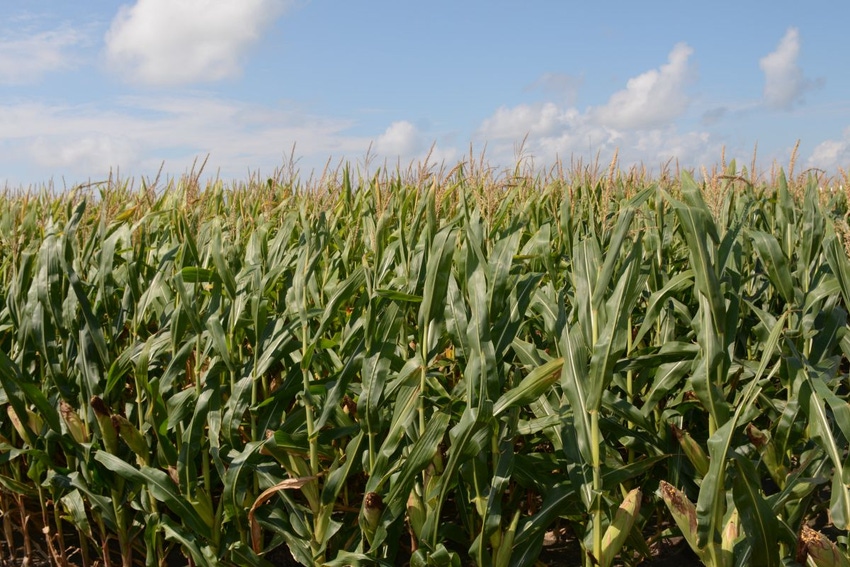
North Carolina falls just short of 'Year of the Corn' prediction
At this year’s All Commodity Conference, Ron Heiniger, North Carolina State University Extension corn specialist said the state fell just short of achieving the “Year of the Corn.” The state still achieved a record 144 bushels per acre.

At last year’s All Commodities Conference in Durham, NC, Ron Heiniger boldly proclaimed 2016 as the “Year of the Corn” because it would be the year North Carolina would make a record average statewide corn yield of 150 bushels per acre with at least one farmer making 400 bushels per acre.
At this year’s conference, Heiniger, North Carolina State University Extension corn specialist, said the state fell just short of achieving his prediction. The state still achieved a record 144 bushels per acre, according to USDA’s National Agriculture Statistics Service, six bushels short of Heiniger’s goal. And the best yield in the 2016 North Carolina yield contest was 320.20 bushels per acre on irrigated land in Yadkin County by Matthews Family Farms, 80 bushels short of Heiniger’s 400 bushel benchmark.
At last year’s conference and in other meetings across the state in 2016, Heiniger said an El Nino weather pattern should create ideal corn growing conditions for the state: dry weather at planting, timely spring rates and warm temperatures in summer. Unfortunately, the weather didn’t fully cooperate.
“Most of my forecast was on track. I talked about a dry April and May and that was certainly true in the Piedmont, but it was not true in the northeastern part of the state. In fact, 10 inches of rain in Hyde County in 24 hours and the flooding down there certainly took a chunk out of my statewide yield average,” Heiniger said at this year’s conference.
Much of the state did have decent and timely rainfall in May and June, but parts of the state did see a two-week dry period in June which hampered yields. Still, Heiniger said corn was a good crop in North Carolina in 2016. However, he is not proclaiming 2017 as another “Year of the Corn.”
“There will be good corn grown this year, but it’s going to be more difficult for you this year. It will be more challenging than it was last year because we are changing into a La Nina weather pattern,” Heiniger said.
This means a warmer late March and April with average rainfall and a hot and dry May and June with cooler temperatures in July and August and above average rainfall, particularly along the Coast. Heiniger said this isn’t the best corn growing weather and is actually better for cotton and soybeans. “Don’t tell the cotton guys, it’s the ‘year of the cotton;’ it’s a soybean-cotton type crop year,” Heiniger said.
“The best corn in 2017 will be planted in May,” Heiniger said, adding that farmers who want to plant in April should turn to short season hybrids. He emphasized that managing corn will be complicated this year and optimum planting dates will likely be May 1 to May 15. “Avoid planting from April 10 to April 20,” he said.
Heiniger also stressed the following:
An early and uniform stand is critical. Growers must find the best and least cost options to get good emergence and quick growth must be balanced with avoiding stress at silking.
Select conservative seeding rates when planting dryland corn.
Maximize water availability for those dry weather periods.
Good soil structure, in-row ripping and good early fertility is critical.
Select multiple hybrids with good or very good drought tolerance.
With good management, North Carolina farmers should make good yields this year; Heiniger said the key is producing good ears. “We’re going to see some good yields in the contest this year: a lot of 250s. But what’s it going to take to break 300 or 400, it’s going to take those good ears all the way across the sample,” he emphasized.
Also, Heiniger said a deeper seeding depth pays off and makes a difference in yield. “Generally, deeper is better,” he stressed. It is also critical for the corn plant to get a good concentration of nutrients for early growth.
To make 300 to 400 bushel yields, boron is necessary, just like zinc, for the plant to pick up phosphorous. “These nutrients make a difference to each other,” Heiniger stressed. “When one is out of whack, you’re likely not picking up something else. Tissue samples can tell us a lot about what we’re missing. We have to get phosphorous uptake and we have to figure out how to do that.”
It is critical for farmers to make sure their corn is not magnesium deficient, zinc deficient, phosphorous deficient or boron deficient. “Get enough nutrients in the plant to reach yield levels,” he stressed.
Through it all, Heiniger said it is vital to avoid stress at silking. “Late stress hurts us the most. For those without irrigation, hot temperatures and dry weather can take out some yield,” he said.
-30-
About the Author(s)
You May Also Like





